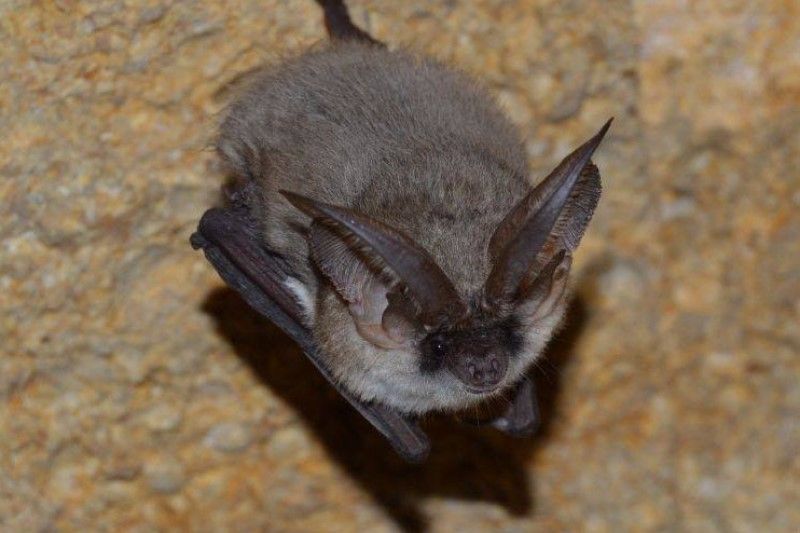Grey long-eared bat

Status
Native and rare
Population
1,000
Scientific name
Plecotus austriacus
Grey long-eared bats are one of the rarest mammals in Britain. They look very similar to brown long-eared bats and, even close-up, it can be difficult to tell the two species apart. Generally, grey long-eared bats are larger and have a darker face and broader tragus (a lobe that extends up from the base of the ear) than brown long-eared bats. Their fur is more grey in colour, although this can be misleading because brown long-eared juveniles are grey until about a year old. Whilst sleeping or hibernating, both brown and grey long-eared bats tuck their ears beneath their wings and leave only their long tragus exposed. Both species of long-eared bats usually feed relatively close to their roosts. They fly slowly and their broad wings mean that they are highly manoeuvrable. Their ears are very prominent and give them an unmistakable profile, recognisable even as they fly by.
Wingspan: 25 – 30cm
Weight: 7 – 14g
Lifespan: Typically five years for males and nine years for females; up to 12 years
Reproduction
Females only start breeding at two or three years old. They mate in the autumn and females form maternity roosts in late spring. Usually a single pup is born in the second half of June.
Diet
Moths, lacewings, crane flies and beetles.
Summer roosts
Little is known about their preferred roosting sites in Britain. There are records of roosts in attics of old houses and in churches, similar to sites used by brown long-eared bats.
Winter roosts
Thought to roost in underground sites such as caves, tunnels, and cellars.
Habitat
Thought to be similar to that of the brown long-eared bats. It forages in woodlands and open meadows.
Predators
In Europe, predated by barn owls; domestic cats may also kill them.
Threats
Severe winters; and timber treatment at roost sites.
Ultrasound
Grey long-eared bats produce similar echolocating calls to those of brown long-eared bats: quiet (low intensity) calls that range between 25 and 50kHz; they are often called ‘whispering bats’.
Status and conservation
GB Red List: Endangered (EN).
Population size and distribution
England, 1,000. The population trend is unknown. Grey long-eared bats have probably always been rare in the UK. They are only found along a thin strip of southern England, from coastal areas of Dorset to West Sussex, and are present on the Isle of Wight and the Channel Islands. They are unknown in Wales, Scotland and Ireland.
Did you know?
The ears of brown and grey long-eared bats are particularly sensitive to low frequency sounds, such as the beating of moths’ wings.
